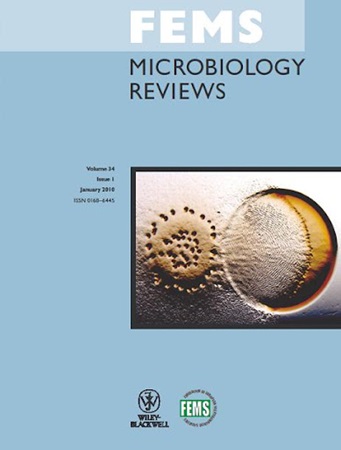潜入药物筛选:斑马鱼胚胎作为抗菌药物发现和评估的体内平台
IF 12.3
2区 生物学
Q1 MICROBIOLOGY
引用次数: 0
摘要
耐多药细菌的增多凸显了对创新疗法的需求,然而,尽管抗菌药物的发现层出不穷,新药的推出却停滞不前。一个主要障碍是,有前景的体外数据与动物模型体内疗效之间的相关性很差,而动物模型体内疗效对临床开发至关重要。现有动物模型的费用和复杂性阻碍了早期体内试验。因此,迫切需要具有高转化价值的经济、快速的临床前模型。为了克服这些挑战,斑马鱼胚胎已成为一种极具吸引力的传染病研究模型,它具有符合道德规范、开发迅速、易于维护和遗传可操作性强等优点。斑马鱼胚胎感染模型涉及病原体和潜在抗生素化合物的显微注射或浸泡,为早期药物筛选提供了一种前景广阔的解决方案。它为在整个生物体内评估化合物的药效、毒性和作用机制提供了一种经济、快速的方法。本综述讨论了这一模型的实验设计,以及它的优势和挑战。此外,它还重点介绍了最近在斑马鱼胚胎感染模型中发现的化合物,并讨论了该模型在预测化合物临床潜力方面的相关性。本文章由计算机程序翻译,如有差异,请以英文原文为准。
Diving into drug-screening: Zebrafish Embryos as an in vivo Platform for Antimicrobial Drug Discovery and Assessment
The rise of multidrug-resistant bacteria underlines the need for innovative treatments, yet the introduction of new drugs has stagnated despite numerous antimicrobial discoveries. A major hurdle is a poor correlation between promising in vitro data and in vivo efficacy in animal models, which is essential for clinical development. Early in vivo testing is hindered by the expense and complexity of existing animal models. Therefore, there is a pressing need for cost-effective, rapid pre-clinical models with high translational value. To overcome these challenges, zebrafish embryos have emerged as an attractive model for infectious disease studies, offering advantages such as ethical alignment, rapid development, ease of maintenance, and genetic manipulability. The zebrafish embryo infection model, involving microinjection or immersion of pathogens and potential antibiotic hit compounds, provides a promising solution for early-stage drug screening. It offers a cost-effective and rapid means of assessing the efficacy, toxicity and mechanism of action of compounds in a whole-organism context. This review discusses the experimental design of this model, but also its benefits and challenges. Additionally, it highlights recently identified compounds in the zebrafish embryo infection model and discusses the relevance of the model in predicting the compound's clinical potential.
求助全文
通过发布文献求助,成功后即可免费获取论文全文。
去求助
来源期刊

FEMS microbiology reviews
生物-微生物学
CiteScore
17.50
自引率
0.90%
发文量
45
审稿时长
6-12 weeks
期刊介绍:
Title: FEMS Microbiology Reviews
Journal Focus:
Publishes reviews covering all aspects of microbiology not recently surveyed
Reviews topics of current interest
Provides comprehensive, critical, and authoritative coverage
Offers new perspectives and critical, detailed discussions of significant trends
May contain speculative and selective elements
Aimed at both specialists and general readers
Reviews should be framed within the context of general microbiology and biology
Submission Criteria:
Manuscripts should not be unevaluated compilations of literature
Lectures delivered at symposia must review the related field to be acceptable
 求助内容:
求助内容: 应助结果提醒方式:
应助结果提醒方式:


